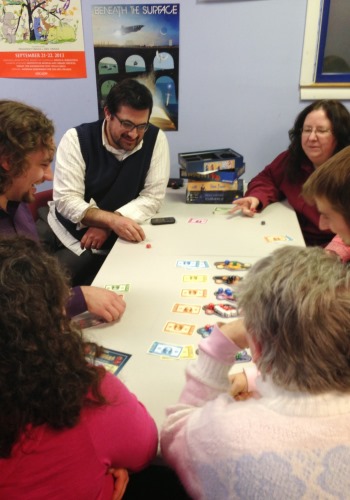Board in the Library, Part Deux
A Progressive List of Game Types
We are pleased to publish this article, the second in a six-part series on board game programming in public libraries, from John Pappas, the Branch Manager at the Bensalem Branch of the Bucks County Free Library System. (Read Part One | Part Two | Part Three | Part Four | Part Five | Part Six). See also webinars with John on boardgames: The Golden Age of Gaming: Board Games for Grown-ups and Whose Turn Is It, Anyway? Online Board Gaming and Libraries.
Introduction
The scope of board games has exploded in the past 10 years and provides a major hurdle for new gamers as well as for those stalwart librarians attempting to create a gaming environment in their library. While this broad, colorful swatch of games provides plenty of variety, it can be intimidating to the uninitiated and those new to the hobby. In this article, I will provide a list of board game types which will move from the classic folk games of yesteryear and the mass-market games of your childhood into the wide diversity of modern board games. In each list item, I will describe the category, introduce traditional ways in which this category is incorporated into the library space, and provide a brief mini-review of a few games of merit. My big four are classic games, party games, gateway games, and filler games.
Classic Games
These are the abstract board games people are practically born recognizing and knowing how to play - checkers, chess, cribbage, go, dominoes, parcheesi, card games using a standard 52-card deck, etc. Classic games do not tend to have any attributed authorship, no recognized designer, nor much narrative potential (they don't tell a story). Even "themed" chess sets barely scratch the surface of a thematic experience and generally no story evolves from playing a couple of games of checkers or dominoes. This hardly makes them boring though. Classic games have been passed down through the generations and potentially experienced several cultural iterations making them streamlined and at times deeply strategic and engaging. However, in the end, they are highly recognizable to the point of being innocuous.
What to do with them? Potentially you can start up a chess club or tournament if there is an interested (and skilled) staff-person or volunteer. However, my preferred use of classic games is to start a "game hub" in the library. A game hub is an area or table dedicated solely to games and play. In my branch the first table when you walk into the library has a small spread of classic games (chess, checkers, dominoes) as well a some mass market games (Scrabble, Bananagrams). A hub like this can be stocked with inexpensive, easily recognizable, and quickly played games and potentially serves three additional purposes:
- It is a multi-generational play space in the library! Seriously, stop right there, pat yourself on the back, and consider yourself a winner. Dedicating space to gaming is a huge step and classic games are nothing to sneeze at - they vary in depth and, frankly, are classics for a reason. A game hub can provide space for families to sit down together to a play a game, a place for new english learners to practice (Scrabble is pure gold for this), or a place for kids (and adults!) to kill some time.
- Promotion of gaming events. One can assume that if people are sitting around to play games, they may be interested in events related to gaming in the library. Library signage can quickly become wall-paper but providing a gaming hub creates a three-dimensional, interactive promotional space.
- Promotion of new games and a gauge of interest. Start featuring new games such as King of Tokyo or Click Clack Lumberjack to expose patrons to new games. Offer to show them how to play. Patrons rarely help themselves to a rulebook and sit down to learn a new game. Simply setting out unfamiliar games is not enough. Having staff willing to teach and play them are necessary as well.
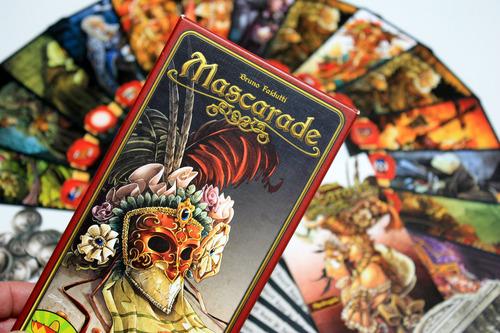 Party Games
Party Games
Party games primarily encourage social interaction and extroverted performance before developing a winning strategy. They are distinguished from other, more complex games by a simpler set-up, quicker-to-learn rules, and accommodations for larger groups. Another attribute of many party games such as Apples to Apples, Wits and Wagers, or the seriously NSFW (or library!) Cards Against Humanity is that having a winner is not as important as the interaction, memories, and laughter that come along with the game, making party games more social and experiential. For this reason party games can be easily incorporated into other (non-gaming) events.
What to do with them: Similar to the gaming hub of classic games, party games can become a staple of any library space. If there is time before an event, party games are a wonderful way of encouraging play while waiting for the main attraction. Similarly, young adult programs can be supplemented with a party game as an icebreaker, to pass time, or as an essential part of a meeting (such as a Teen Advisory Board Meeting brainstorming session starting with a round of Cranium). Since these games encourage social interaction and
Examples: The usual holiday cache of games found in your closet at home - Trivial Pursuit, Apples to Apples, Balderdash, and Wits and Wagers are all easy enough to find, learn, and set-up. However, if you would like something new and adventurous then follow me into a world of intrigue and deception with:
- The Resistance: Avalon! This is a deduction game from Indie Boards and Cards where players assume the role of either a force of good from King Arthur's court; or a force of evil led by Mordred, bent on the destruction of Camelot. You see, hidden among Arthur's court and unbeknownst to the forces of good are Mordred's minions. These minions know who each other are and remain hidden to all but Merlin. And he can only speak of it in obscure riddles! Players need to bluff, deceive, and trust their gut in an attempt to identify or hamper their enemies and ensure the safety (or destruction) of Camelot.
- Skull! This is a pure bluffing game from Asmodee where 3-6 players each have a set of four wildly decorated coasters (three emblazoned with flowers and one with a fancy skull). Each player first places one coaster face-down in front of them, then in turn order, players can either place another coaster face-down in front of them or start a bid. The bid is on how many flowers they can draw successfully before hitting a skull. Players can then out-bid or pass. The player who wins the bid then chooses which coasters to flip over. Exceedingly simple and fun to play, this game can be doubled up with a second set to play up to 12 people at once. And just like a game of poker, it is all about reading other people; and just like in poker you are usually wrong!
- Mascarade! Who is behind that mask? This is a game of hidden roles and identities also from Asmodee for 3 to 13 players from Bruno Faidutti (Bruno is amazing, by the way). In this game it is every player for themselves in a mad rush to amass the most gold through the telling of subtle truths, blatant lies, and / or bluffing. Each player receives a Character card (the bishop, the queen, the thief, the fool, etc.) and during each turn, they either announce (or lie about) who they are and activate the power of that Character, and as long as none of the other players challenge them, it works! They can also choose to secretly look at their card or swap their card with another player under the table. Within 2 minutes of play, madness ensues as players guess and parry over who is who and who is lying.
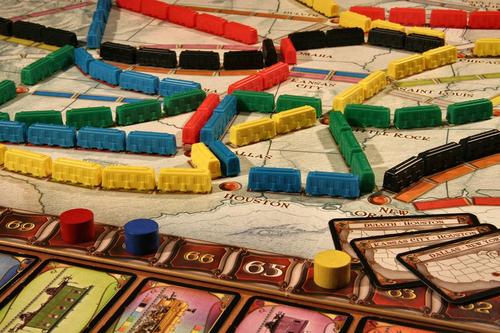 Gateway Games
Gateway Games
A "gateway game" is any game with simple rules that is easy to teach to new players. This is the perfect genre of game to attract new players to board gaming as a hobby. These are the games which take the gaming experience one stuttering step beyond the dingy mass-market monopoly into the sunny world of modern board games. Since experiences will vary across different people, making a definitive list of gateway games is difficult. For example, I came to the board game world after an adolescence of role-playing games (RPGs) so the best gateway games for me were games with a rich narrative arch, well developed characters, and plenty of storytelling. So what introduced and originally attracted me to the hobby (for example, Munchkin and Zombies!!!) may not be as attractive to others.
Either way, if you are planning a board gaming group for your library and want to attract both new and experienced (or emerging) gamers, then gateway games are a natural place to start - they are easy to learn but still provide a wide enough decision space to appeal to experiences players. These games likely have more rules than most mass-market games but they won’t be overwhelming and still can be quickly learned, referenced and set-up by even the most inexperienced gamer. They usually have less intricate or fleshed out themes from other modern games, but are still fun with new and potentially unfamiliar mechanisms to enhance the game-play. In addition, some gateway games are now getting almost mass-market appeal, showing up in Barnes & Noble, Target, and Toys R’ Us as well as online at Amazon.com.
What to do with them: These games will make up the bulk of your board gaming collection and will likely be the most played at board gaming events. Staff can familiarize themselves with the rules and game-play quickly and be able to introduce and teach them to attendees. They set up fast, play in under an hour (so they fit into your standard library program), and are generally well-vetted by larger board game publishers (i.e. they are usually in print and affordable). They don't tend to play as many people as a party game so consider 3-5 people to be the optimal number for a gateway game. This means, of course, if your goal is 10 attendees, more than one table is needed and more staff or a knowledgeable volunteer is required to help moderate.
Do not underestimate the value of a good gaming volunteer! Feed them, bribe them with games, do whatever you need to do to keep them.
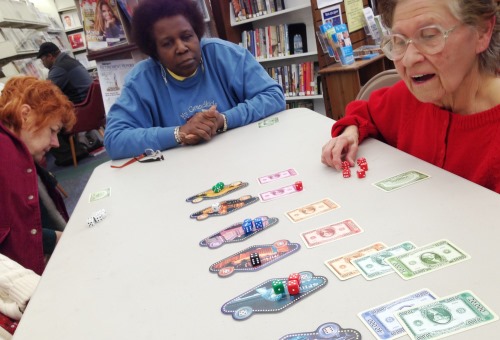
- Stone Age: A game of prehistoric proportions for 2-4 players from Z-Man Games. Players take the role of hunters, gatherers, and resource collectors as they build their small tribe into greatness. This is an entry-level worker placement game, where players place workers on areas of the board to gain access to stuff (resources, buildings, or sets of cultural cards) to score points, but must also remember to gain enough resources to keep their tribe well fed.
- Kingdom Builder: In this award winner from Queen Games, 2-4 players work to build kingdoms and score points by building according to certain conditions set at the beginning of the game. Simple, satisfying, and likely to change from one play to the next, this gateway game is totally accessible to anyone.
- Ticket to Ride: Faster than a speeding locomotive this route-building game is becoming a modern classic. Ticket to Ride from Days of Wonder pits 2-5 players against each to claim the most, and the longest, railway routes in North America. This game is a classic for a reason. You can learn and teach it quickly and the game provides plenty of interaction and tactical decisions for all levels of experience.
- Carcassonne: Along with The Settlers of Catan, Carcassonne practically reinvented modern board games. Players draw a tile featuring some combination of a city, monastery, grassland, or road. Then the tile is placed adjacent to a similar tile so that road connects to road, city connects to city, and so on. Then players choose whether they want to place a "meeple" - a game-piece which looks like a gingerbread man - on the tile. Quick, tactical decisions, simple strategy, and a game that scales well between 2 and 5 players makes Carcassonne a must for every library collection.
- The Settlers of Catan: Build settlements, roads, and cities while collecting and trading resources. THE gateway game of all gateway games from Mayfair Games. While this game may be getting played out, there are plenty of expansions and reiterations to keep it interesting.
- Alhambra: In this award-winning game from Queen Games, 2-6 players purchase and place tiles in order to build the most magnificent palace garden (Alhambra). The actions are quite simple: Buy a tile, take money, or organize your Alhambra.
- Pandemic: This cooperative game from Z-Man Games has a team of 1-4 players working together to eliminate four virulent disease strains from the world. Coordinating strategic movement around a map, applying special abilities and, most of all, using teamwork will be the only way to conquer the diseases and save the world.
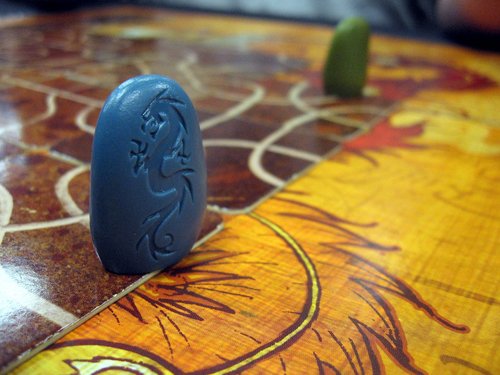 Filler Games
Filler Games
Even easier and simpler to play than gateway games, filler games are slim in both rules and in the time spent playing. They are meant to "fill" the gap between larger games or while players are arriving or leaving an event. Personally, I think these games get overlooked and undervalued. They are simple but can be great fun. Several rounds of a good filler game can be just as much fun as something larger and more complex all for a much lower hurdle of entry. Along with the gateway games, these filler games are getting carried in more and more stores and can be easily found on Amazon.
Where do they go? Filler games are so tiny, they fit anywhere in the library. Stick Zombie Dice in a gaming hub. Place Sushi Go! in a study or meeting room. Keep a few in the board game collection for any gaming event. Use them as gateway games for younger teens and older adults. For my Golden Gamer’s 65+ gaming group, I use almost exclusively filler games to provide an extremely easy, quick, and fun introduction to gaming. From there our group may move into more complex gateway games as players become more familiar with game mechanics.
- Sushi Go!: A cute card-drafting game for 2-6 players about sushi!
- Bohnanza: A game of negotiation and bargaining where you play the most exciting vocation of all - the bean farmer. I know, I know, take my word for it.
- Citadels: Plays a bit long for filler at around 45-60 minutes but can scale down easily to a shorter game. The game mechanics are very simple where you play different roles in order to build a grand city. A good step up in complexity from Sushi Go.
- Guillotine: Decapitate nobles in a totally fun, light-hearted way!
- Tsuro: In Tsuro you place a tile on the board to keep your flying dragon from colliding with the edges of the board or with another dragon. Simple, fun, and plays 2-8 players.
- Incan Gold: If you want to remember one designer's name - remember Bruno Faidutti. He will never steer you wrong. In this "press your luck" game you dive into a temple to recover treasure before you get snagged by a trap.
- Zombie Dice: Roll dice, eat brains. Don't die (again).
- Love Letter: 16 cards in total and each player draws a card and then plays a card. The goal is to get your love letter to the princess.
- Fluxx: The rules change constantly in this fun, silly, many-faceted card game.
- Las Vegas: Roll your dice and place them on one iconic casino in order to win a jackpot.
And don’t forget two-player filler games like Jaipur, Battle Line, and Lost Cities.
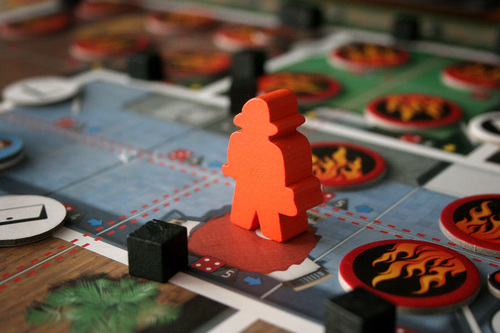 Bait Games
Bait Games
Scott Nicholson's words: "The idea of a 'Bait Game' is that it is short, easy to teach, visually attractive, and instantly engaging. It's a game that you can have out on a table and someone says 'Hey, what's that?' It's a game to have out alongside video games and draw people over to try it. If someone watches a Bait game in action, they should be able to get a basic idea of what's going on from watching it for a short while" [BGG, 2009].
Personally I am looking at anything that draws a crowd. If you want to generate some buzz about your gaming events or group then put out Rampage, Space Cadets: Dice Duel, or Going Going Gone! on a table with a few players and you will get people to stop and look.
My favorite "bait" game is Flash Point: Fire Rescue. It is not as fast as some of these others and is certainly not simple (although the "family" version can get set up quickly). Despite the length, people playing will be screaming and talking to each other and laughing in no time. It was one of the only games where, when we won at the end, everyone in the library cheered.
A few other examples:
- Escape: The Curse of the Temple: A cooperative (everyone plays together on the same team) game where everyone is frantically rolling dice to collect treasure, escape traps and curses, and escape a temple - all in 10 minutes. This game also comes with a CD of sound effects which seriously adds to the atmosphere of the game.
- Click Clack Lumberjack: Jenga but instead of being made of wood, it actually looks like a tree. Take a whack with an axe in order to knock off the bark without felling the "core" of the tree.
- Rampage: A dexterity game where you play a monster on a rampage through a city. Destroy buildings, blow people away with radioactive breath, then gobble them up.
- Dexterity Games: Almost any game where you have to move around the table and physically manipulate game-pieces in weird and unusual ways is a dexterity game. And most dexterity games are wonderful examples of bait games. Fun, silly, and people can jump in and out of them easily without dedicating too much time or investing too much thought.
The Games are in the Tubes
We've covered a lot today! Now that we have lots and lots of games to explore let me recommend a few YouTube channels that can be a wonderful resource to learn games, discover how they play, and see first-hand the type of player interactions that they engender.
- Geek & Sundry, including TableTop, hosted by former Star Trek: The Next Generation actor Wil Wheaton as he invites three quasi-celebrities and notable geeks to play a featured board game. The lovely part is they usually choose a gateway game to play and the half-hour show will provide a good overview of the rules and how the game plays. Also it is great fun to watch. However, the language can be a tad salty at time, so use earphones if you're at work.
- Starlit Citadel: This Canadian online board game store provides fast reviews and introductions of some popular games. They update about once a month and have a good list of past videos so browsing a few will give you a good handle on some popular, approachable games. However, they are a store so expect the reviews to be glossy and not entirely critical.
- Watch it Played: This board and card game video series is created and hosted by board game "ambassador of awesome" Rodney Smith. Rodney does full playthroughs of a selected board game each video while explaining the rules and focusing on how the game works. The production quality gets better every year and it has been a boon to me when I need to learn a new game quickly.
- Board Games with Scott: This is a classic YouTube series from the grandmaster of games in libraries himself, Scott Nicholson. With 70+ videos over five years of vlogging, this is the go-to source for board games in libraries. Since Mr. Nicholson is no longer updating Board Games with Scott, the games may be a bit dated but many (most) are still popular and in print. He also included a Gaming in Libraries video course. Listen, all you really need is this channel, go watch it now. Why are you still here? Go watch it! If board games could dream, they wouldn't dream of wooden sheep. They would dream of Scott Nicholson.
Goodness! Will you look at the time?

John Pappas is the Library Branch Director at the Primos Branch of the Upper Darby Township / Sellers Free Public Library. He enjoys talking about emerging technologies, gaming, public librarianship, outreach, and zen.

